How the heck do they do it?
How do your favorite bloggers attract so many gung-ho, drum-thumping followers?
Be honest – you’d love to inspire that much loyalty.
You try your darndest to emulate them, but nothing seems to work.
Your visitors are like water pouring through a strainer.
They may come to check out an intriguing headline, but they hardly ever seem to stick around.
In other words, few visitors seem to turn into followers or even potential affiliates.
So what is left to try? You feel defeated, destined to remain a small-time blogger.
But what if you could use the secrets of psychology to mesmerize your visitors and dazzle them into becoming devoted followers?
Before starting a blog, you need to understand the three psychological triggers underlying reader loyalty.
The Hard-Wired Triggers of Undying Reader Loyalty
Each of us is unique in our own way, but we all have basically the same psychological machinery, triggering us to feel key emotional reactions under certain circumstances.
So when we come across a particularly mean-looking dog in the park, our fear reaction triggers, and we feel an impulse to back away.
Likewise, when we see a picture of a good-looking stranger on a dating app, our attraction response is triggered, and we feel a little buzz telling us to find out more.
It’s as though we have a bunch of tiny sensors in our brains that, when triggered by the right signals, make us want to do things without even understanding why.
And as it turns out, loyalty has specific triggers too.
In fact, according to Columbia University researcher Heidi Grant Halvorson, there are three chief psychological triggers that create feelings of loyalty.
And whether they do it intentionally or not, the most successful bloggers in the blogosphere trip all three of these loyalty triggers, enchanting visitors into becoming committed followers.
Loyalty Trigger #1: Warmth
Blog visitors will be drawn to you if they perceive you to be appropriately warm.
This is because humans unconsciously associate warmth with altruism – that is, you’re the kind of person who cares about others and might even offer to help a stranger.
Readers also instinctively sense that a warm person won’t try to mislead or manipulate them, for instance, just to make money blogging.
If you can demonstrate a warm demeanor via your blog, you’ll transmit all of these positive feelings directly into the hearts of your readers – creating attachment and loyalty.
However, too much warmth can have the opposite effect, making you seem desperate and needy, so you must strike the right balance.
Don’t worry – we’ll get into exactly how to do that below.
Loyalty Trigger #2: Competence
Warmth is important, but it’s not enough to create long-lasting loyalty.
Your readers also want to feel confident that you are competent – that you know what you’re talking about. Otherwise why would they invest their precious time and energy in your ideas?
Demonstrating competence both directly (by showing expertise) and indirectly (by showcasing endorsements from others) is critical to winning reader loyalty.
But as with warmth, going overboard to appear competent can backfire. You might come off cocky and unapproachable, which could intimidate readers into keeping their distance.
Fortunately, you can appear confident in your abilities without being overbearing. Again, don’t worry – we’ll cover how to do that.
Loyalty Trigger #3: Relevance
Ever stumbled across a blog on your favorite topic only to quickly feel a lack of connection?
Maybe you felt it was intended for someone with a more advanced background, or maybe it was targeted toward readers with slightly different goals than your own.
When that happens, it’s possible that the blogger was deliberately targeting a different kind of reader. But it’s equally possible that the blogger didn’t have enough insight into her target reader’s actual situation (or did a poor job communicating it).
In contrast, when a blogger displays deep insight into her visitors’ challenges, goals, views and experiences, she pulls the third loyalty trigger – relevance – and readers do feel a connection and want to stick around.
If you make your readers feel understood, and show them your content is relevant to their lives, you’ll successfully place the final piece in the loyalty jigsaw puzzle.
Want to know how to put all these triggers to work for you? Read on.
1) Tell Stories from Your Reader’s Perspective
Loyalty Trigger: Relevance
Many bloggers assume that telling personal stories will help readers relate to them, encouraging loyalty. And that’s somewhat true.
However, when you tell a story from your perspective, readers must take the extra step of relating it back to their own experience before they can fully connect with it.
So what if you were to cut out your I’s and me’s and tell stories from the reader’s perspective straightaway?
You’d be pulling the relevance trigger hard.
How to Activate It
Consider the following (hypothetical) personal story:
Now let’s translate the story and tell it from the reader’s perspective:
See the difference?
Your personal experiences will always remain excellent raw material for your writing. After all, a deep insight into your own problem might shine a light on a similar problem faced by readers.
But the majority of your posts (and especially their openings) should be written from the perspective of readers themselves.
That way, your content will feel relevant from the get-go.
2) Sprinkle Your Writing with Success Stories
Loyalty Trigger: Competence
If you’re truly a master of your topic, you should have some success stories to show, right?
Your visitors think so (subconsciously, at least).
That’s because genuine competence leaves success in its wake. People follow the advice and they get results.
Fortunately, you don’t have to prove that you’re worthy of a Nobel prize to get readers to trust that you know what you’re talking about.
Even small examples where your ideas made a difference in people’s lives will trip off the competence trigger.
How to Activate It
If you’re new to blogging, the best way to get started with this is to pepper your blog posts with real examples that prove your ideas work.
“Several friends adopted this approach, and each one found a new job within two months.”
Just as with resume writing, it’s better to write in terms of specific outcomes instead of broad claims.
And once your readers have experienced success that’s directly attributable to your blog, you can start to incorporate that too:
Of course, the Rolls-Royce version of this approach is to write an entire blog post centered around a reader case study.
For instance:
- “How Using the XYY Technique Saved One Reader $10,000”
- “How 3 Divorcées Found New Love Online with these Profile Drafting Tips”
Whether you start modestly or boldly, telling readers about people whose lives have improved because of your ideas is a rock-solid way to get readers addicted to your blog.
3) Show Your Readers How You’re Just Like Them
Loyalty Triggers: Warmth, Relevance
As bloggers, we can get so caught up in the process of creating great content that we lose sight of the fact that we’re writing to connect with people.
We forget to appeal to them on a more personal level, and by neglecting to highlight common ground we introduce a subtle barrier that diminishes the human connection – and undermines loyalty.
Fortunately, you already have at least one major thing in common with your blog readers – an interest in your blog topic. So you can easily activate the warmth and relevance triggers by drawing parallels between yourself and your reader.
How to Activate Them
Show readers you’re just like them with the following approaches:
First, use the words “us” and “we” in your writing more frequently.
You can also put yourself in a group with your readers by using phrases like: “health geeks like us,” “fashion lovers like us,” “technology nerds like us” or “grammar freaks like us.”
This is very powerful. It says: “I get you, and you get me” – one of the most powerful loyalty-inspiring sentiments known to humankind.
Second, remind your readers that you were a beginner, too.
Sometimes when you’re in the role of teacher, readers find it more difficult to relate to you because of the knowledge gap.
So reminding them occasionally that you were once a beginner is another way to foster devotion.
Try telling a story about how you learned a particular lesson the hard way.
For example:
Highlight the things you have in common with your readers and you’ll appear warmer and more relevant. Remind them you were in their shoes not long ago and you’ll multiply the effect.
Loyalty is sure to follow.
4) Credit Your Influencers
Loyalty Trigger: Competence
As a blogger, the pressure to appear as though you know everything about your topic can feel intense.
We want our readers to turn to us for guidance. We want them to think we’re the real deal.
We fear that if they discover not every one of our ideas is completely original, we’ll be dismissed as second-rate.
But the truth is, research shows that people who pretend to be islands of knowledge appear 20%–30% less competent than people who give others credit.
This is because truly competent people know that it’s impossible to figure everything out alone.
So go ahead and give credit to your influencers. You’ll actually trip off, not undermine, the competence trigger.
How to Activate It
Chances are that many of your blog posts are inspired in part by the work of others.
To get started giving credit to your influencers, all you have to do is start mentioning the books, articles, blog posts, documentaries, classes and conversations that help you craft each new post.
There are many creative ways to mention your favorite experts.
Here are a few ideas:
Link to them
When you reference someone else’s idea or work, link to them, like Tim Soulo did (twice!) in this post from Blogger Jet.
Quote them
Quoting someone puts them in a position of authority, and it’s a great way to show that your knowledge doesn’t exist in a bubble.
Here’s an example from NDTV.com:
Summarize them
Give a quick overview of your favorite influencer’s most important ideas, like Lifehacker did with this post: 11 Life Lessons from Albert Einstein
Follow them
Follow another expert’s advice and write a case study highlighting your results.
That’s what Carrie McBride did here:
Giving credit to others won’t make you look inferior or like a copycat.
On the contrary, you’ll appear savvy and strategic, and people will want to join you for the journey.
5) Display a Strategic and Prominent Personal Photo
Loyalty Triggers: Warmth, Competence
The right personal photo can inspire feelings in your visitors that are difficult to create with words.
This is because we are naturally drawn to certain physical qualities, such as a confident smile and a relaxed expression.
These attributes serve as cues for the warmth and competence triggers, stimulating feelings of loyalty.
Anyone can display these traits in a photo, so why leave that opportunity unexploited?
How to Activate Them
The following photo properties were revealed by a study of 60,000 photo evaluations to project the optimal combination of both warmth and competence:
- Make sure your face casts a shadow all the way around your jaw. To achieve this, try tilting your chin down slightly. According to the research, a defined jawline will maximize your appearance as both competent and as warm.
- Smile with teeth, but avoid a laughing smile. According to the data, a smile that’s too small will make you appear cold. A smile that’s too big will make you seem less competent.
- “Squinch,” or slightly squint with your eyes. Slightly narrowed eyes project confidence and give the impression of competence. Wide eyes, in contrast, can convey fear (the enemy of competence).
- Show your head and shoulders. The same study determined that an upper body framing is best for presenting as both competent and warm. Ideally you should avoid a full-body shot, but don’t exclude your neck and the tops of your shoulders.
If you aren’t sure which of several photos to choose, try using an app like photofeeler.
Anonymous users will rate your photo on three dimensions: likeability (i.e., warmth), competence and influence (which is related to competence).
Lastly, make sure to place your photo in a spot visible to a first-time reader stumbling on one of your posts. This will help you maximize the chances that the visitor will remember you favorably, and maybe even influence them to become a subscriber right away.
A good place for the photo is at the top of your sidebar, like this:
Alternatively, author photos placed directly under the post title (such as the ones here on Smart Blogger) can work well too.
If you take the time to find and position the perfect photo, you’ll make an impression on your readers as warm and competent visually as well as intellectually, doubling your impact.
6) Use Comment Replies to Show Empathy and Consistency
Loyalty Triggers: Warmth, Competence, Relevance
Reader comments present a prime opportunity to activate all three loyalty triggers.
Showing empathy and being consistent will help you be seen as warm, competent and relevant to your audience.
Conversely, neglecting or misjudging comments can seriously diminish reader loyalty.
For example, a blogger who ignores reader comments risks coming off as cold and uncaring.
At the other end of the spectrum, a blogger who is too eager to please in his comments can give the impression of desperation.
But if you employ the right strategy, comment replies are a rare opportunity to pull all three loyalty triggers at once.
How to Activate Them
Getting comments right is mostly about making the time commitment.
For starters, in the first couple of days after your post is published, you should respond to comments as quickly as you can. Try to respond to any comments that appear within the first few days, even if you don’t get to them right away.
By responding promptly and consistently, even with very short replies, you display two of the most potent indicators of warmth – reliability and integrity.
In fact, research by University of Pennsylvania’s Paul Rozin suggests that people are more likely to remember you as warm and helpful if you do this than if you sporadically post saccharine compliments and gratitude.
So be consistent, even if it means having no time for small talk.
Secondly, if a reader takes the time to stop by and share a problem, make sure to empathize in your comment reply by reflecting their frustration back to them insightfully.
Phrases like “It sounds like you feel” or “I’m sorry that happened to you” work wonders. They will demonstrate that you have deep insight into their situation (making what you have to say relevant), that you are warm, and that you are competent, all in one shot.
Here’s an example from adaringadventure.com:
Here’s another, this time from jodichapman.com:
Never fake agreement or contradict the points you made in your post to try to win likeability points. People see through this, and it can destroy trust.
Instead, if a commenter writes something that doesn’t resonate with you, strive to see their point of view, but if you still disagree, politely remain firm and thank them for stopping by and adding to the conversation.
7) Let Your Readers’ Motivational Style Drive Your Headlines
Loyalty Triggers: Competence, Relevance
Generally speaking, people are primarily motivated by one of two things:
- Rewards – i.e., gaining value
- Self-protection – i.e., avoiding harm
If your headlines miss your readers’ core motivational style, your content won’t feel strongly relevant to them.
Fortunately, it’s easy to make sure your headlines are not only compelling but also trip off the competence and relevance triggers.
How to Activate Them
If you think about it for a few moments, you can probably guess whether your readers are more likely eager for rewards or safety from future problems.
Do your target readers care most about acquiring exciting goodies (fabulous recipes, more money, the newest technology, etc.)?
Or are they more concerned with maintaining the status quo and warding off problems (saving for retirement, staying healthy, saving relationships, etc.)?
Once you’ve categorized your readership, match your post headlines to your typical reader’s motivation style.
So if your readers are likely more reward-focused, tantalize them with the threat of missing out on rewards. For example:
- 7 Mistakes That Are Holding You Back from Your Next Promotion
- The 3 Hidden iPhone 6 Features You Don’t Want to Miss
- 10 Thanksgiving Recipes That Will Be on This Year’s Hippest Tables
In contrast, if your readers are more likely self-protection-focused, remind them that by not reading your posts they are exposing themselves to risks:
- The Ultimate Guide to Avoiding Poverty in Retirement
- 8 Cancer-Fighting Foods You’ve Never Heard About
- How to Protect Yourself from Divorce in the Age of Internet Flirting
A post on a personal finance blog (which is more likely self-protection-focused) titled “6 Ways to Have a Blast on a Budget This Summer” might appeal to some readers, sure.
But it likely won’t resonate as deeply with most readers as a post with the title “6 Hidden Money Traps to Avoid This Summer Vacation.”
Adjusting your headlines to emphasize either rewards or self-protection (depending on your audience) will pull the competence and relevance loyalty triggers and keep readers clicking on your posts time and time again.
Let’s Get People Hooked on Your Blog
You put your heart and soul into your blog, and you deserve a loyal audience.
The right kind of connection will transform fleeting visitors into regular readers.
It’s time to add another powerful tool to your bag of blogging tricks – the psychology of reader loyalty.
By demonstrating warmth, competence and relevance through the deliberate blogging behaviors described above, you’ll finally start attracting readers who choose to stick around.
And the best thing? It really just boils down to learning how to communicate the best version of you to your readers – your kindest, most skillful, reliable and empathetic self.
Keep practicing these techniques, little by little, and you’ll experience first-hand the beauty of making powerful connections with your readers, inspiring long-lasting loyalty.
Visitors will become addicted to your blog, your audience will swell, and you can finally leave those small-time bloggers in the dust.

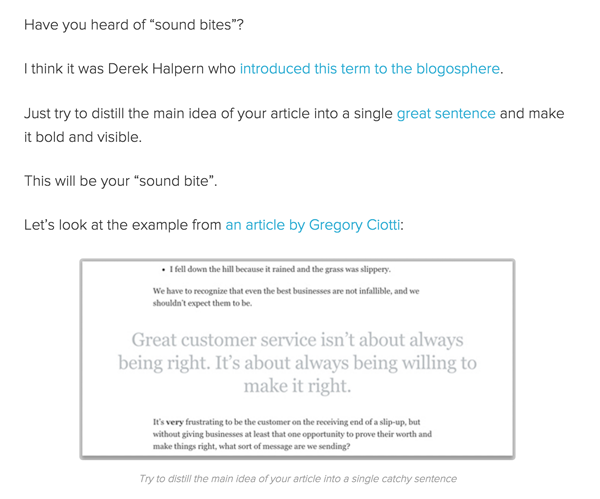
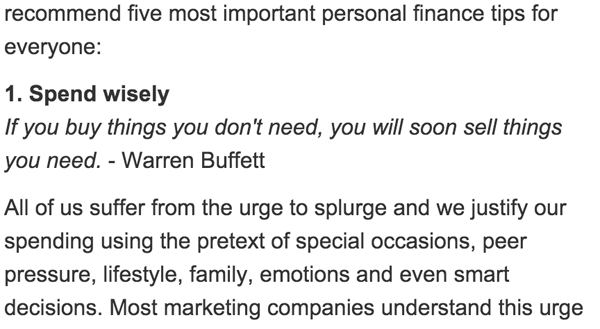
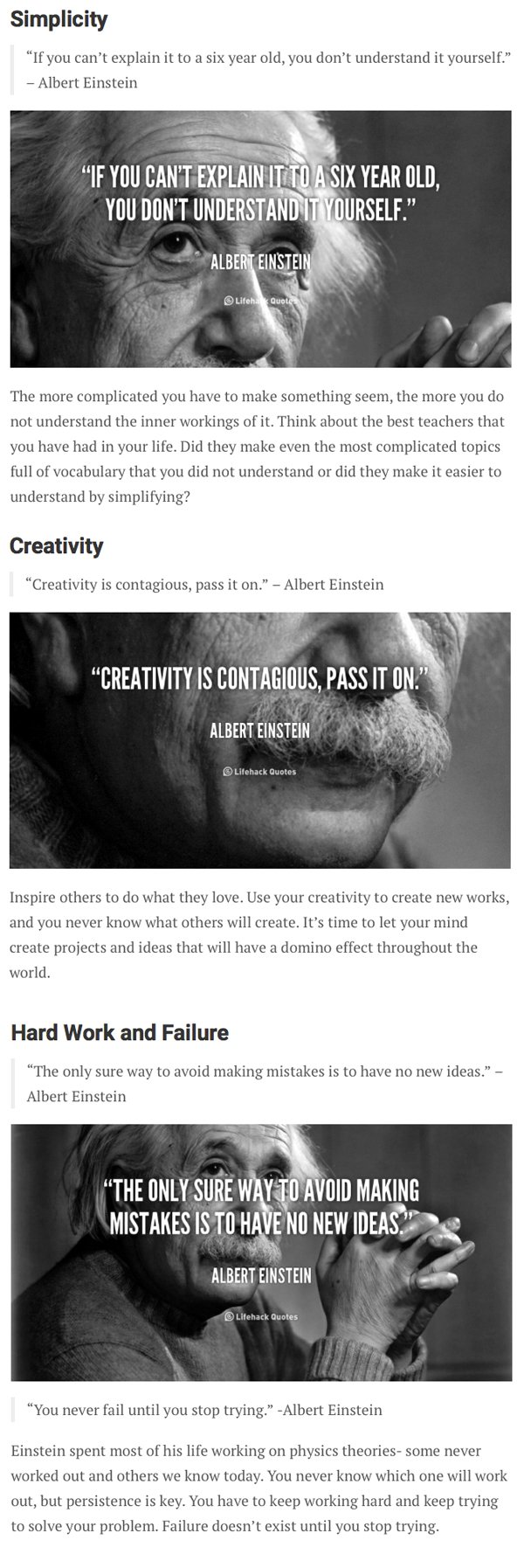
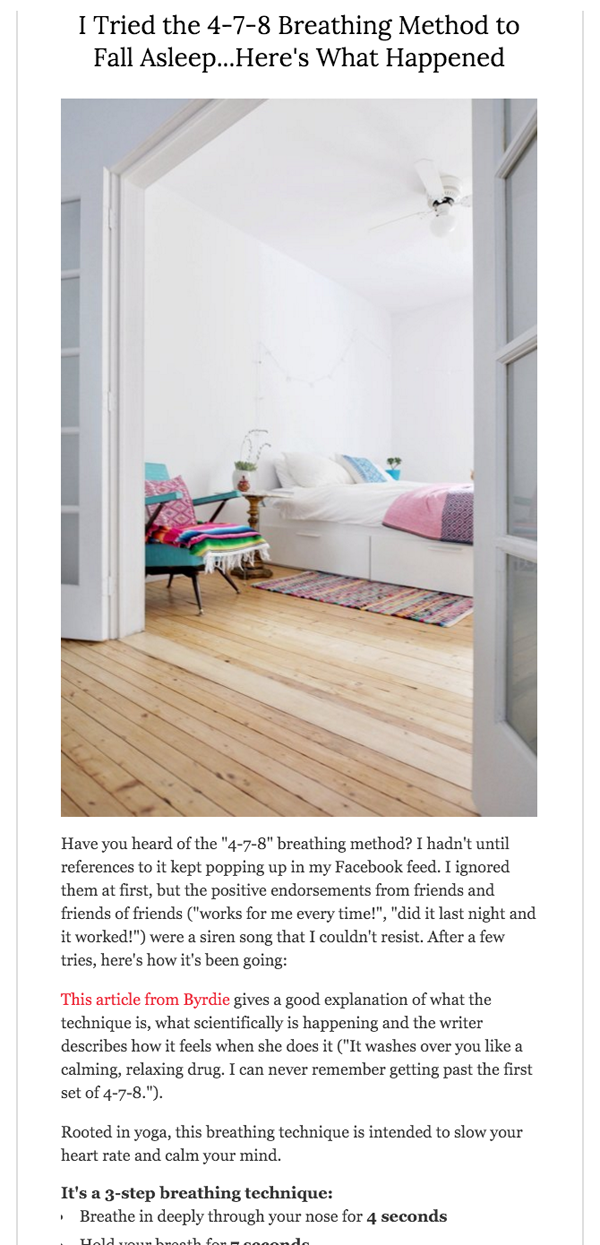

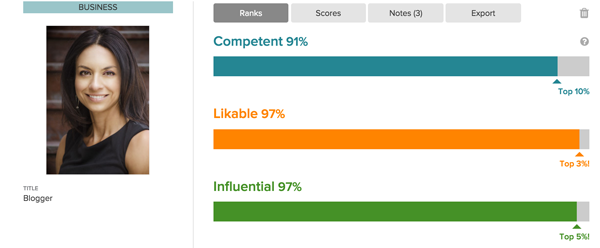
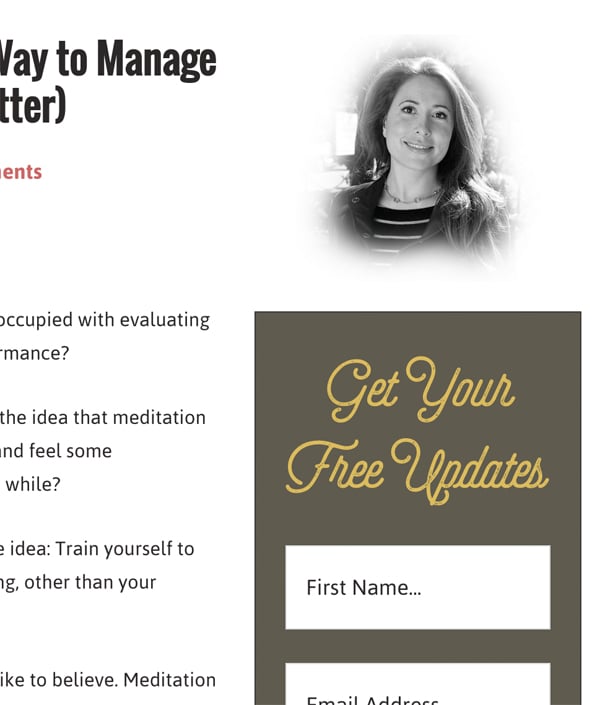
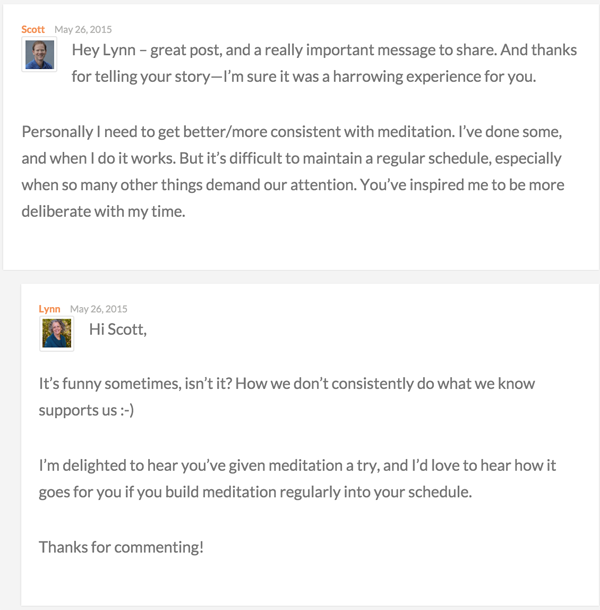
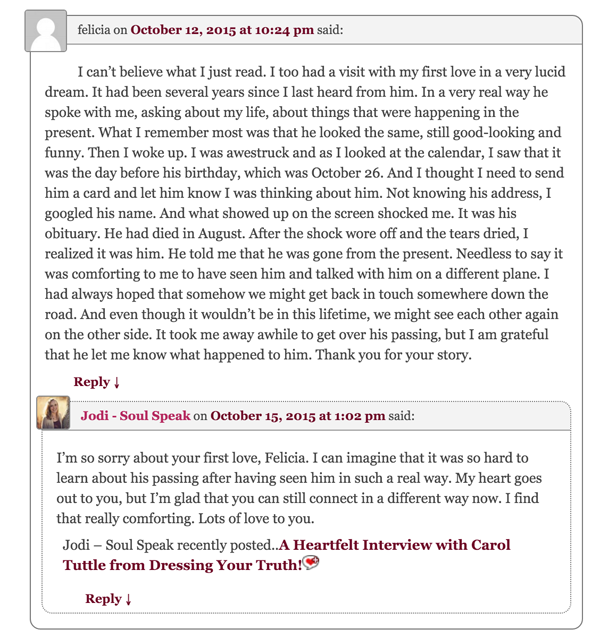




Hi Katharine,
Welcome back to BBT for a second time! Good to see you here again. 🙂
I often tell my wife that if I never got into my current field (or blogging, for that matter) I would have been a psychologist. I love this kind of stuff — the psychological triggers that make people do what they do. Your post is right up my alley!
Thank you for linking to my “Ultimate Guide to Writing Comments…” post, by the way! That was very kind of you, Katharine. 🙂
I’m going to read your post one more time before getting back to my work day. I’ll also tweet my friends and help spread the word. Great job on this one, Katharine! Enjoy the traffic and comments you’re going to receive today. 🙂
– @kevinjduncan
Hi Kevin,
Thank you for your welcoming comment 🙂
Yes, psychology is the best, isn’t it? I’m so glad you enjoyed the post.
Your post about comments has completely changed my commenting style, so my pleasure 🙂
~Katharine
Hi Katharine,
You’re very welcome!
I did enjoy your post – very much, in fact. You did a wonderful job with it!
Here’s a “color me curious” question for you: Did you have more fun writing this post or your previous “How to Build Relationships with Popular Bloggers…” post? Was it better the second time around? 🙂
I’m glad my “comments” post had such a big impact on you! You just made my day, Katharine. 😀
– @kevinjduncan
Aww thank you. *blushing*
You know, I think I liked writing this one better. I think it’s because my first post was about blogger outreach, and I think most people consider that to be a bit of a necessary evil. It *can* be rewarding, but it’s not as much fun as doing everything you can to make a strong connection with your readers. At least from my point of view.
First, I’d like to commend Kevin for all your excellent articles. Has really changed the way I viewed things, and of course how I approach things. Kat, great posts, I know you’ve been inspired in many ways by Kevin too. Absolutely, giving due credit to your sources/influencers pays a lot in the long run and consistently responding to new comments creates so much warmth and empathy which sometimes makes it more vibrant than the post itself.
Can’t wait for the both of you to read your next posts.
Great Job Katharine love your post. I’ve learnt one key thing and that is loyal and communication is the key to get loyal audience.
Hi Bill,
Thank you!
Yes, strategic communication is so key. 🙂
~Katharine
When you have no other options, no backup plan, no escape route, no do-overs, “Hail Mary” kind of situation at hand: smile.
Rarely does a person have such a unique opportunity to find out what they’re really made of.
Thanks for sharing, Courtney. Your description of how your thoughts shift into “calm and focused” mode in the face of a “sink or swim” task is really admirable.
I’m excited to see what new feature Buffer has in store, and confident you all will succeed together in launching it! 🙂
Katherine, I loved reading this article, especially because it’s full of clear, actionable examples for readers (something I value highly!).
I have been a fan of photofeeler for nearly a year, and each time I visit, I’m thoroughly impressed [the same inspiration seems to apply each time I visit this blog too, hmm 🙂 ]
Thanks for sharing your expertise. Happy to share this post and I’ll be looking out for more of your articles in the future!
Best,
Amanda Tiffany
Hi Amanda Tiffany,
Thank you! I’m very glad that you found it actionable – it can be a challenge sometimes to make hazy concepts really concrete and usable, at least for me.
And yes, isn’t photofeeler great? I love their blog, too. They have so much interesting dating to mine, kind of like Ok Cupid.
~Katharine
You’re very welcome and I’m sorry for the double-up comment I posted there!
That’s what I get for writing out comments for multiple blogs in another tab and then copying/pasting with abandon 😛
~Amanda
Hi Amanda!
Thanks for clarifying what happened with your comment. I saw your name, thought to myself, “Let’s see what Amanda has to say…” and then wondered if you and I had read the same blog post! Haha. 🙂
– @kevinjduncan
Great article. I manage to include some of these traits as I post, but need to go back and rework my approach a bit. Warmth, Competence and Relevance! All very important ingredients. I’m not a golf pro but I do love the game and when I share my own struggles and offer solutions I’ve discovered, the response is always positive. Thanks again for the info. Will put it to use right away.
Hi Pat,
I’m so happy you enjoyed it.
You know what’s funny, if you *were* a pro at golf, you might have a harder time connecting with people looking to get better because your struggles would be so “advanced” in nature. It’s awesome that you’re at that level where you have something worthwhile to share but golf students still identify with where you are. Perfect sweet spot.
~Katharine
P.S. I love golf but am terrible. I’ll have to check out your blog 🙂
Katharine, it’s nice to virtually meet you 🙂
Both talking from the reader’s perspective and sprinkling success stories in between have really resonated with me.
For example, many of us (in the thousands) have been really intrigued with the likes of Pat Flynn (Smart Passive Income). As you may already know, he came from nothing just like the rest of us (thus, speaking from a reader’s perspective), and one day he put his foot down and nailed it with a very lucrative monthly income (sprinkling success stories in between his posts).
The same applies with other great people like Jon Morrow and countless more.
Thank you so much for writing this. It’s the first thing I read while drinking a warm cup of coffee, and it truly made my day.
Take care,
Elvis Michael
Hi Elvis,
Aww, thank you! I’m so glad that it helped get your morning off right 🙂
Yes, I really connect with those techniques, too. I love really accessible bloggers who share personal stories but still seem to make it all about my perspective. Worth mastering that technique I think for sure 🙂
And I’ve never read any of Pat Flynn’s work, but I’ll have to check him out. It sounds like I would like him.
Thanks again, Elvis.
~Katharine
Hi Katharine,
Great tips. I agree that credit to influencers is a genuine way to win the readers. I often mention quotes and link to YouTube videos in my self improvement blog and that is quite effective.
Hi Rajkaran,
Thank you 🙂
When you link to a video, do you imbed it or just put the link? Curious.
~Katharine
Oh, yes I should have mentioned as ’embed videos’.
No, it’s ok. I was just curious 🙂
Hi Rajkaran,
Good to see you here, my friend! Very true — offering quotes and YouTube videos in your posts (while crediting the sources, of course) is a great tip. It’s one of my favorites, in fact.
– @kevinjduncan
Katharine,
This post was sheer gold. Everything you said here resonated with me so much and I’ve been trying to implement more psychological tactics in my writing, and i have an excellent source here.
Regarding that info about the picture, I never looked at it that way but now that you mentioned it, you’re correct. Some pictures do look colder than others and it’s based on some things you mentioned.
And your tip #1 may just change the whole way I tell stories. Thank you for that.
– Andrew
Hi Andrew,
Wow, what a compliment – thank you!
It’s a lot of fun to start connecting more powerfully with an audience when you start really seeing everything from their point of view. 🙂
~Katharine
Hey Katharine,
Now this was a great feature-packed article. Caused me to think deeeep into myself – some serious psychology hacks can cause wonders!
Thanks for packing up all of them and serving them over here. I bet this will help hundreds of people in attracting audience (including me 😉 )
I was too excited to give it some social love… 😀
Hi Paras,
Thank you 🙂 And I’m really glad to hear it caused you to reflect a bit. Awesome. I hope lot’s of fruitful things come from it!
~Katharine
Hello Katharine,
This post completely reflects my favorite combination.
Well, here’s my favorite combination in case you’re wondering what it is:
Computer Science + Marketing + Psychology = Pure Awesomeness!
This post again made curious about how small changes and tiny actions are capable of creating enormous changes.
The ways readers perceive our words, matters a LOT! Even if our intentions are clear and we might contain huge potential, the way we represent our words remains a decisive factor in growth.
…liked the way you explained the insights in brief. 🙂
~ Vishal
Hi Vishal,
Haha, yes, I agree that is a pretty awesome combination of things 🙂
And thank you for characterizing it the way you did: small changes capable of creating enormous changes. I agree that some of these tips definitely fit that description.
Thanks again!
~Katharine
Great article Katherine. It is also timely as many of my readers are currently struggling with how to get more subscribers.
I have a question. I thought it was important to use “you”, so the reader feels we are speaking directly to them. Yet, you say using “we” and “us” is important.
Which do you suggest, or do you suggest both? When would I use each? Thank you?
Janice
Hi Janice,
Thank you!
And that’s a really good question.
I think all of those words are important to use.
I would use more “you” in post introductions, because it’s SO important that the reader get the impression that the post will fix their problems in the first few sentences of the introduction.
I think “us” and “we” are better kind of woven through the writing to create additional connection.
Those are my 2 cents!
Thanks again 🙂
~Katharine
Hi Janice,
Good to see you here! That’s an excellent question, and I’m glad you asked it so we all could get Katharine’s thoughts on it.
Depending on my post topic, I tend to use “you” throughout the post or “us/we” throughout the post. Not sure why, but I rarely mix them.
If it’s a subject where the reader could think I’m scolding them, I will use “we” throughout. As in, “I’m in this with you… All bloggers go through this.”
However, when I’m being inspirational or motivational, I tend to use “you” throughout. I like readers to think, “Wow… he’s talking to ME! I’m going to go out there and fight a bear today… I’m pumped!” 😉
Just my 1/2 cent, though. Katharine is the psychology expert! 🙂
– @kevinjduncan
Hi Katherine
Enjoyed your article. Ever reading Robert Cialdini’s famous book “Influence: the Psychology of Persuasion”, I’ve been eager to to learn more about how to employ psychology in marketing.
I really like your point about showing empathy in responding to comments with readers. I love responding to comments. It’s a great way to build a rapport with my readers and foster relationships.
On the other hand, I think I get a black mark for not showing my teeth in my profile picture. Time to practice my friendly but not too cheesy smile.
Clement
Hi Clement,
Oh, that’s a wonderful book.
I love your picture, you look very sincere. Why don’t you throw it up on photofeeler just to get some voting from others and see how it rates? I’d be curious to see.
I’m very glad you enjoyed the article 🙂
~Katharine
Thanks for writing this Katharine…this is gold mine of solid tips I can act on right now.
I especially enjoyed the part about crediting influencers (other writers/entrepreneurs) whose work has inspired you.
When I first started out, I felt stymied. I thought, mistakenly, that everything worth writing had already been written. I felt like a copycat.
I was wrong.
Once I decided it was okay to “take inspiration” (cough, cough, steal) from bits and pieces of works that I admired, things began to gel. By adding my own personal stories and unique voice, I began to connect with my own creative voice. And that’s what we all want, right?
Thanks for the great reminder that don’t have to re-invent the wheel. Everything great is simply a remix of other work and ideas that came before. By giving credit where it’s due, we tip our hat to the great work of others, while creating our own.
Nicely done. =)
Hi Mike,
Thank you! I’m very glad you found it helpful.
I love you how you described adding your own voice. That’s exactly how I think of it, too. We all might be saying things that have more or less been said before, but a certain group of people might really connect with our own unique angle.
Thanks again 🙂
~Katharine
Great post, Katharine. My favourite takeaway is “politely remain firm and thank them for stopping by and adding to the conversation.” I need to remember that when people say things that trigger me.
Hi Priya,
Thank you. And yes, I agree, it can be really hard to deal with a frustrating commenter. Good luck 🙂
~Katharine
Hello Katharine – thank you so much for such a fascinating post. As a fan of blogging and psychology (although very elemental), it is quite refreshing and inspiring to think of great ideas I can apply to my blogging. In fact, you have finally convinced me to display my face on my blog, up until now I wasn’t convinved there would be much difference if my readers knew what I looked like or not!
Hi Ed,
My pleasure. Thank you for the compliment 🙂
I love your suspenders! I hope you keep them in your photo!
~Katharine
Hi Katharine,
Thank you for sharing, this is gold! So many useful and actionable tips that we can put to action right away.
I have experienced good results from several points you mentioned, especially by being personal and honest while still giving solid and actionable advice. I agree that we should not be afraid to look to mention influencers, it will only help to build credibility.
This post is great and I am going to share this with my audience, a must read for any beginning or aspiring blogger,
Joep
Hi Joep,
Thank you! I’m very happy you liked it 🙂
And thanks very much for sharing, too!
~Katharine
Thank you for writing such an in-depth section on what your photos should look like and where it should be positioned! I never really think of things like that!
Hi Mica,
Your welcome 🙂 Credit for that goes mostly to Photofeeler and their great data set showing us what people like to see the most in photos. Good luck finding the perfect picture!
~Katharine
😉
Hi Katherine,
excellent ideas! Uh oh, I have to do something about my photos…
Only, I would not call those elements “tricks”. If you apply them as a trick, many people will know and be repulsed.
What if you are me, and you simply ARE NOT warm – I am pretty cold and hard, which is one of the reasons people hire me as a controller… I am not sure that presenting myself as warm would be very credible.
Also, confident body language /smile helps, but only if it is genuine. If you want to see what happens when you try to imitate confidence whilst not being confident, check out the movie “Get Shorty” where a C-movie producer tries to imitate the demeanor of a mafia guy and gets an unfavourable response.
All that aside, great post, another one that will send me to work for some hours.
Going to share this.
have fun
Alexander
Hi Alexander,
Thank you, and I am so glad that you brought up that point.
It is true – being warm can work at complete odds with appearing confident, especially, as you point out, if it look insincere.
The best thing for a person who is a bit “harder” in demeanor to do to win loyalty from others is to be reliable, helpful, and to have integrity. We look for warmth in others because it is a proxy for those things (reliability, helpfulness, integrity). It’s faster to convey warmth, but if it’s not your style, just make sure that show others that you are a stand-up guy (which it sounds like you already do 🙂
Thanks again for brining up that very important point!
~Katharine
*whoops, at complete odds with being COMPETENT, not confident.
Yes, very true. Being helpful has earned me many more recommendations than trying to appear warm, which comes across as comedic from a guy who is a terminally number-honest calculator with a bit of Asperger.
Hi Katharine,
Love the tips! I write my own stories because my loyal readers WANT to either live vicariously through me or they crave the same experience. I built my brand on authenticity, on my experiences, and because of that and of my transparency my readers really relate to me, and return regularly, because they see that even a guy who blogs from Fiji and Bali and Thailand and Costa Rica for years or months at a time has been thru and still goes through what they’re going through.
If you write for fun, and do so from a transparent space, your story will whip readers into a frenzy, as they will say – as mine do – HEY….I have been there. I tried writing from my reader’s perspective here and there to experiment, but they were not having it LOL 😉 They wanted me, to tell my story, to inspire them to blog from paradise or to blog from home as a full time online entrepreneur.
All the tips rock. I figure, if you feel grateful for your traffic, and visitors, you will turn them into readers through your fun-loving, heartfelt, genuine, transparent blog posts. People will return and quite often, and they’ll even open your emails within seconds. I post at irregular times and see a quick 5 to 10 opens within 2 to 5 seconds of sending out my newsletters. My lovely, fab readers want their fix, and I feel grateful for it.
Thanks for the inspired share Kat!
Signing off from a crazy rainy Nicaragua.
Ryan
Hi Ryan,
Thank you!
Also, thank you for bringing up the your experience about readers preferring that you write from your own perspective. I do think it’s true that in certain cases this can work. Especially, as in your case, if you are giving them the chance to live vicariously through your awesome life.
But yes, being heartfelt and transparent are definitely key above anything else.
Thanks again,
~Katharine
Thanks Katharine. All great tips. I especially like the Relevance advice. Finding out who you are as a blogger and what you want to say is a great challenge. At least it was for me. I now know my personal blog is about discussing universal problems (usually of middle aged women) and giving my personal solution. Once I got that concept, my traffic increased. Now I just have to work on a better photo!
Hi Laurie,
Thank you 🙂
Yes, I agree 100%, finding out what is “relevant” to your readers is one of the hardest things! Especially if you aren’t sure who they are yet.
I’m very glad that you found your sweet spot 🙂
~Katharine
Thanks Katharine!
I’m just starting, no big audience yet…if any at all.
But it’s good to be prepared. Thank you!
Hi Pav,
Everyone started somewhere 🙂 Good luck to you!
~Katharine
Hi Surveillance,
Thank you very much!
~Katharine
Hey Katharine,
Huge thanks for featuring me in your awesome article! I just learned quite a few things about reader psychology from it! Great stuff! 😉
Hi Tim,
Sure, of course. You made it so easy!
I’m glad you liked it 🙂
~Katharine
great post thanks
My pleasure 🙂
~Katharine
Hi Katherine,
We’ve actually communicated in a G+ group previously and I happened to come across this post through a completely unrelated route 🙂 This is a great post. I am very new at this-going from writing clinical research or educative material to learning how to open up on a personal level and become more vulnerable is a bit of a transition for me.
Your post helped me sort out how to improve that connection and show the warmth that I’m actually feeling for my (hopefully future!) readers through my writing.
It was so nice to come across this post, thanks so much!
Hi Rachel,
Thank you!
And yes, I think I know exactly what you mean. I struggle with the same thing, especially when I am writing about something that I want to present logically and with evidence – I can slip out of my very genuine “warm” mode and sound like a robot.
Nice seeing you here on BBT 🙂
~Katharine
Hi,
When I received this new post in my mailing box from BBT, I was so curious to know more.
After reading this post, I can say that you do a great job with this 7 psychological tricks. ?
This post is what I need to improve my writing style.
Thanks Katharine
Hi Leib,
Very glad that the title grabbed you 🙂
Thank you for your compliment! And very glad that it helped you.
~Katharine
Hey Katharine,
When it comes to building a blog, psychology helps a lot. These tips definitely work because I’m already at least 5 of them and I’m for sure growing my blog little by little.
I think the most important are writing content that are relative to your readers and also replying to the comments that you get. These two elements show how responsive, reliable, and empathetic you are to your readers. With this winning combination while you’re promoting, it would be inevitable for your blog growth.
Thanks for sharing Katharine! Have a great day!
Hi Sherman,
Yup, spot on! I love your choice of summary words: responsive, reliable, empathetic. If you do those things, you can probably screw up in a lot of other ways and still attract readers!
Very glad you liked the post. I’m glad you’re already on your way 🙂
~Katharine
Great Job Katharine love your post. I’ve learnt one key thing and that is loyal and communication is the key to get loyal audience.
Hi Solanki,
Thanks! Very glad you liked it 🙂
~Katharine
Some great tips there, thank you! I get the feeling I’ll be popping back to this to re-read it in the future.
Hi Danny,
Thanks! I hope it helps!
~Katharine
I just use my hypno-ray on them, works like a charm 😉
Haha Hi, Kyle. I see 😉
Hi Katharine,
Wise words and good psychology. We are social animals and good self-care requires addressing our emotional needs. We think so literally in this culture that if it can’t be seen and touched on a physical level , “it” doesn’t matter, let alone exist in the American mind. Helping couples think and function about their emotional landscape is probably the most difficult thing I do in my counseling practice. Thanks for your validation of the value and importance of emotional connections.
I have a question for you: this guest blog is directed primarily at/for bloggers. Your blog seems to be for readers and consumers of emotional/relationship growth. Which is primary (bloggers or readers of blogs) for you and how do the two work together for your “commercial” success?
Thanks,
Paul
Hi Paul,
Thank you! I am very glad that you enjoyed the article and that it synced up with some of your own values. That makes me very happy to see.
To answer your question, my own blog is primarily focused on helping people develop more satisfying relationships of all kinds by creating emotional connections. I don’t generally target bloggers in particular, but these skills have a lot of applications, both personal and professional. I wanted people to get a slice of that here, hence this post 🙂
Thanks again 🙂
~Katharine
Persuading people to follow your brand is no easy feat; gaining your fans’ loyalty is harder.
Absolutely breathtaking post Katherine. When I started blogging back in 2012, I wrote articles and posts, in a very monotonous and passive voice. Guess, this was the result of my blog not receiving much traction. When I changed the tone of my writing to more personal and inclusive of my audience, I immediately saw a spike in my readership and subscribers. many of the points you have provided above will definitely help me retain and relate to my audience more effectively. Thank you Katherine.
As it takes about 7 touches before someone buy from you, It is very important to turn visitors in subscribers. All these tricks helps me so much in getting subscribers ofr my new blog. And you should also use content upgrades to capture visitors.
Pretty remarkable post. I simply came across your blog and desired to say that I have really enjoyed searching your blog posts.
Hi Katharine,
Great tips. I agree that credit to influencers is a genuine way to win the readers. I often mention quotes and link to YouTube videos in my self improvement blog and that is quite effective.
Loving these tips. Emotional intelligence at play here. Thank you so much, Katherine. I am a newbie blogger and these golden nuggets of advice are just that. As a newbie, if anyone’s got time to take a look and see what they think so far…
That was a really helpful and inspiring post. Touching personal success story can trigger emotions and have a long-term impact on readers. I really like the idea of telling stories from the reader’s perspective and will definitely use it. Moreover, in my posts, I sometimes input quotes from influential people like Benjamin Franklin to emphasize on a point and give a little inspiration to the readers.
Many thanks for these golden tips.
Hi Katharine
Thank you so much for this post!
I have saved it and also forwarded it to a good friend of mine who also blogs.
Warm regards,
Fred
Hi Katharine,
I loved your post. You talked about many principles that can also be used in sales. I think a simple but important thing is the way the blogger talks with his reader. We should avoid the authority voice, and adopt a more friendly ton. Articles should be funny and easy to comprehend.
Thank you for all the great post that you’ve linked. I now have about 14 post to read that caught my eye. 🙂
Great job. I will share this post on twitter.
Thanks,
Minuca
Hi, Katharine.
This post is agreat job for beginners in bloging. This post force to go on your blog and to learn more about you. You are a great writer.
Thanks,
Nick
Hi Katherine,
Great post. You are spot on. As the internet n social media mature, its getting more n more difficult to get noticed. Which is why you must focus on building emotional connection a.k.a relationships.
Thanks for this great recipe. Loved your other post too.
I’m sharing this now.